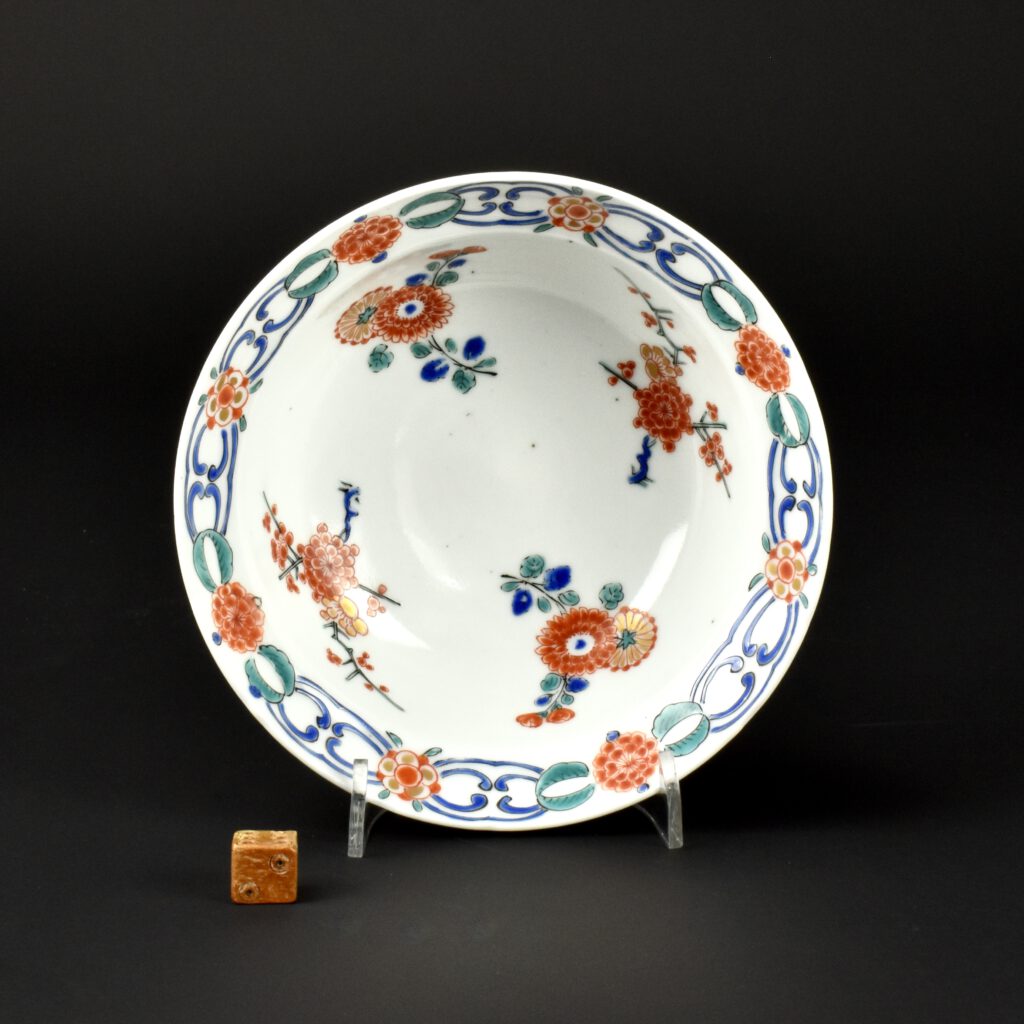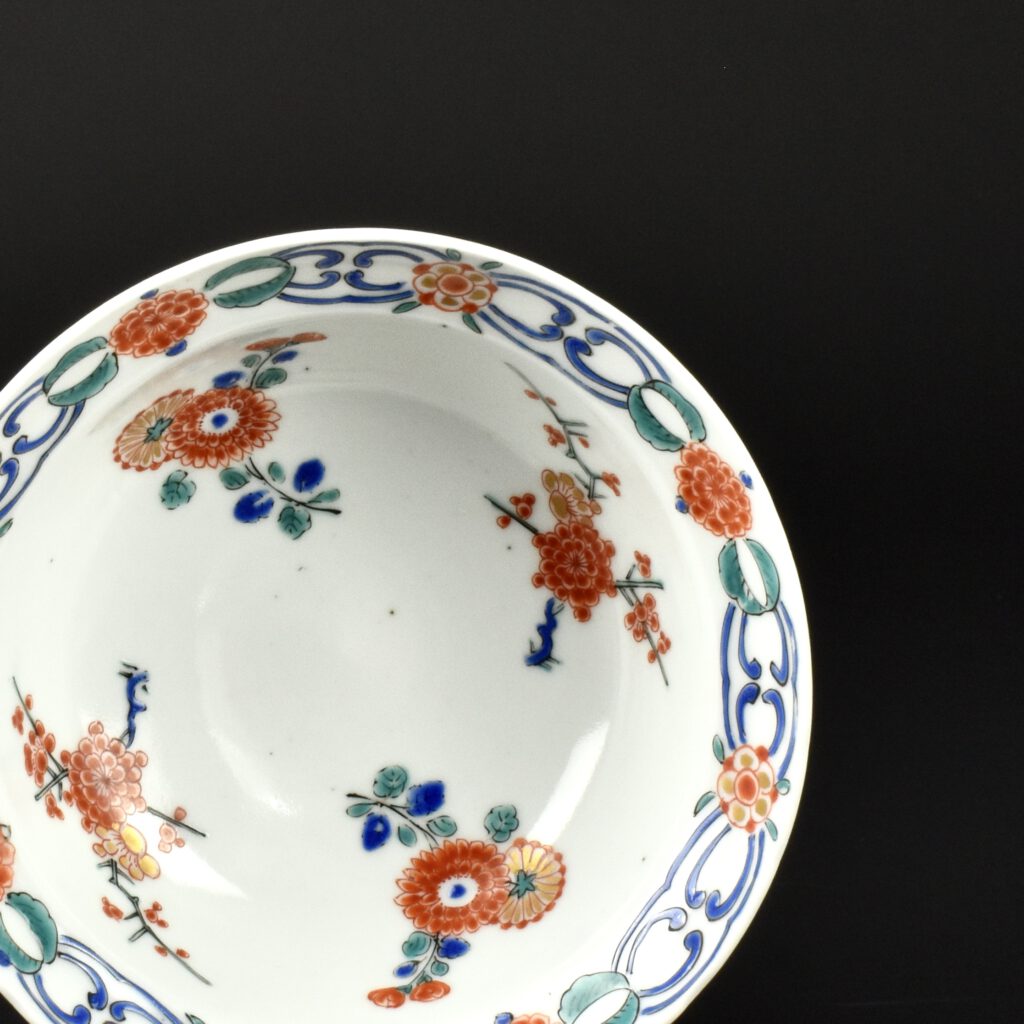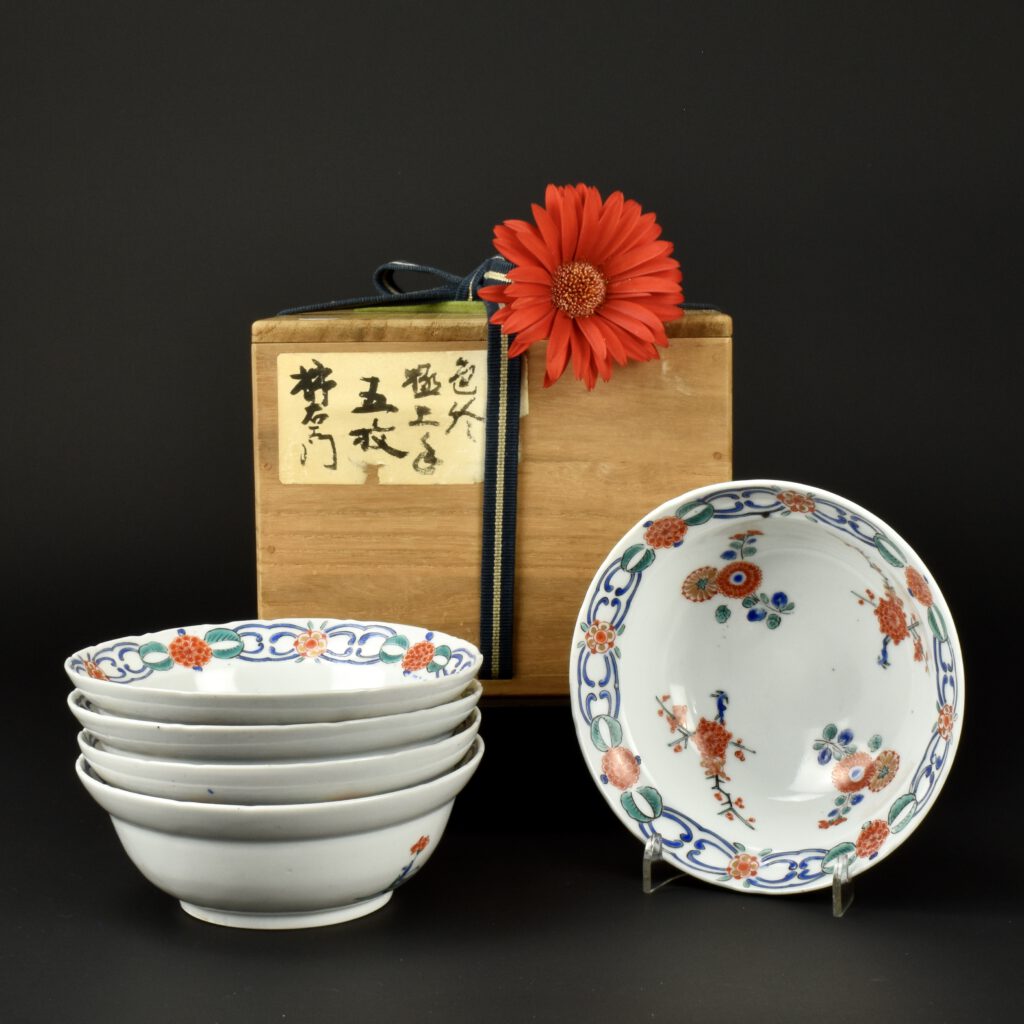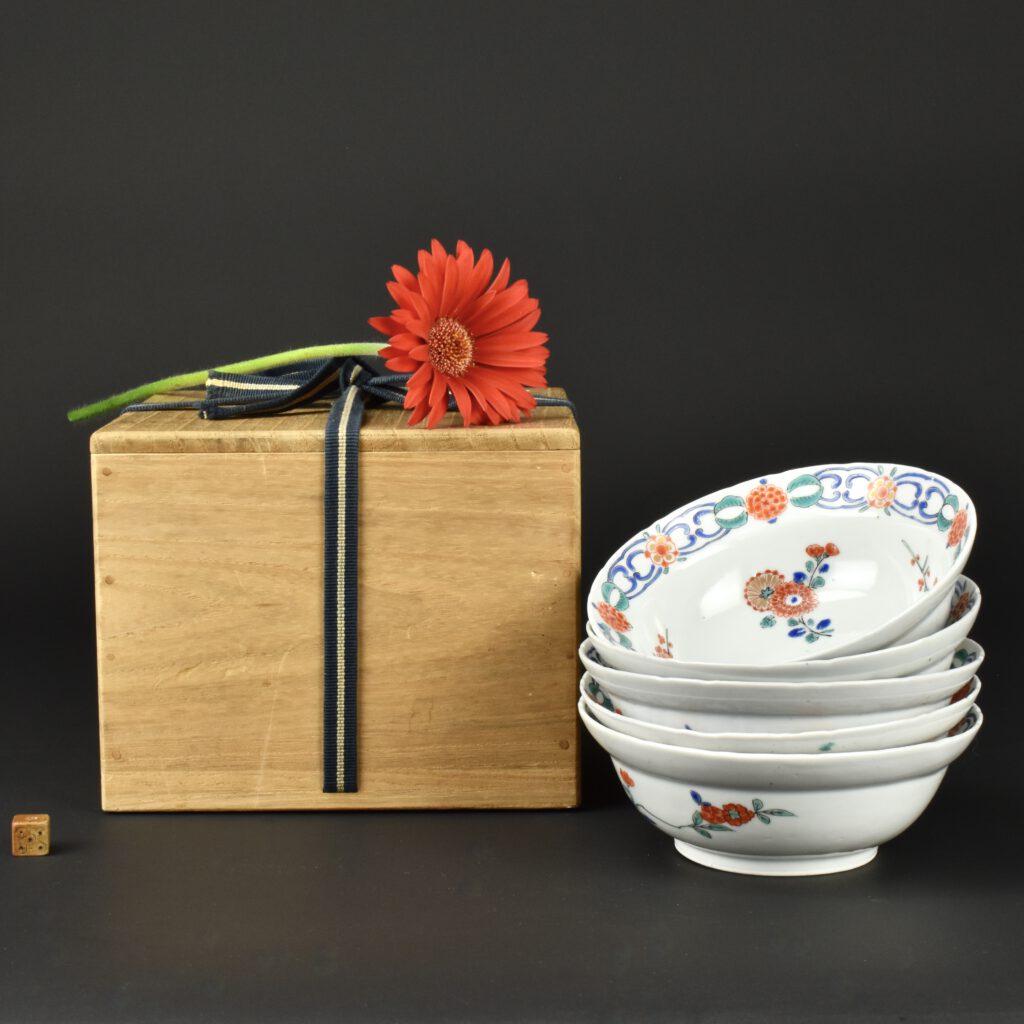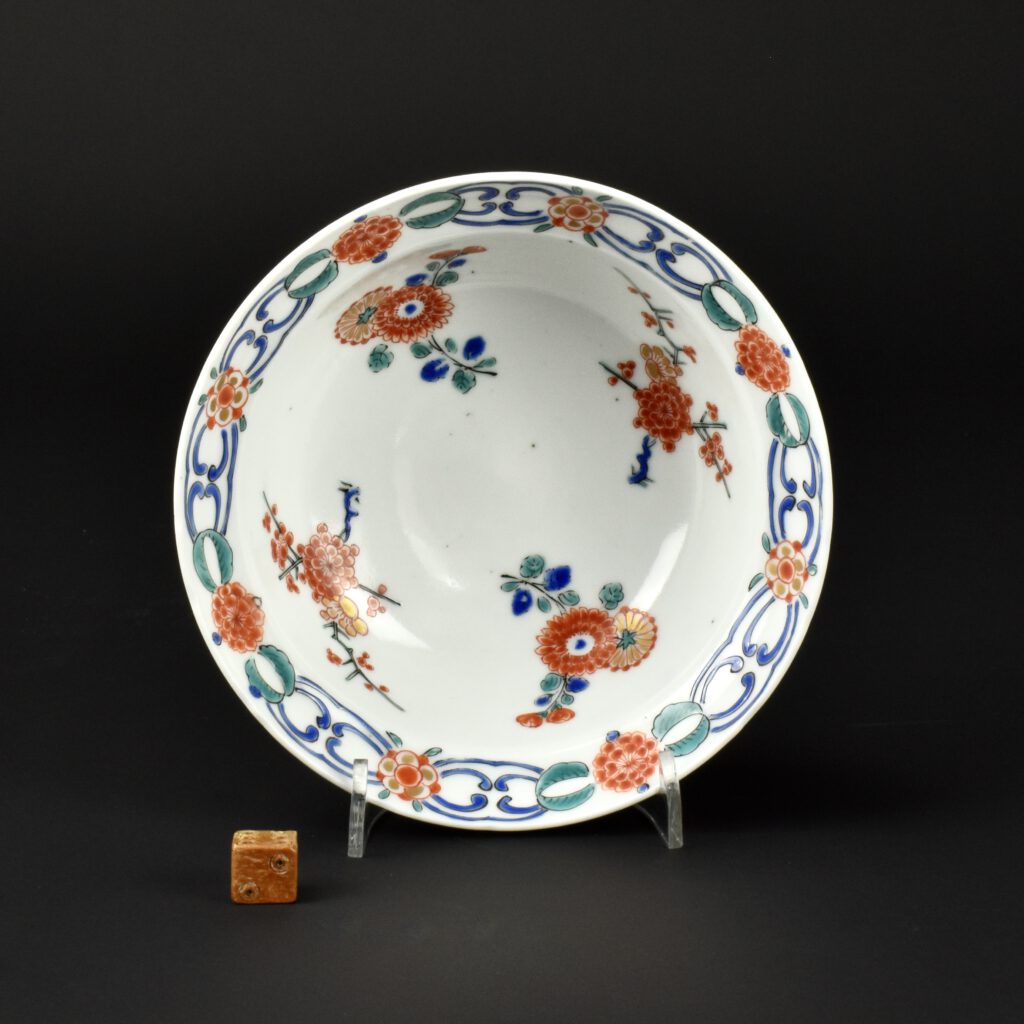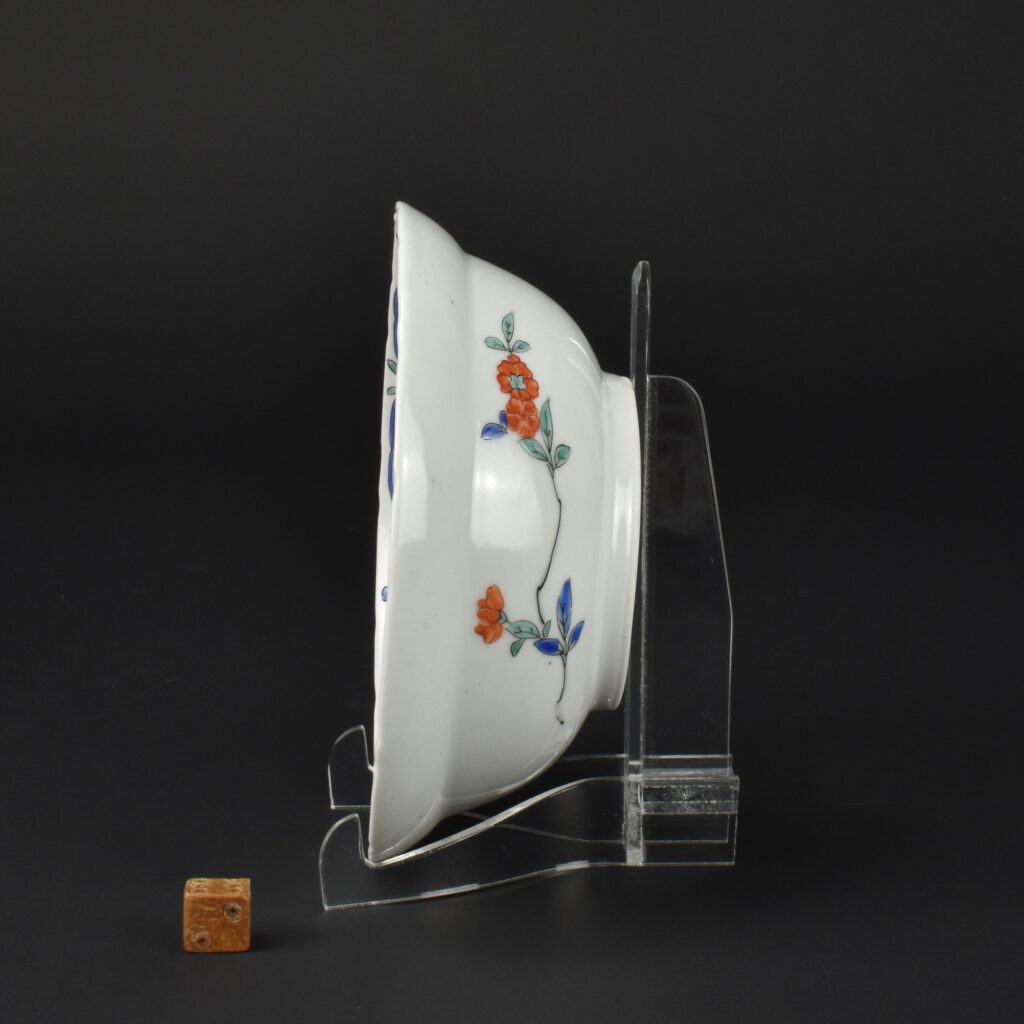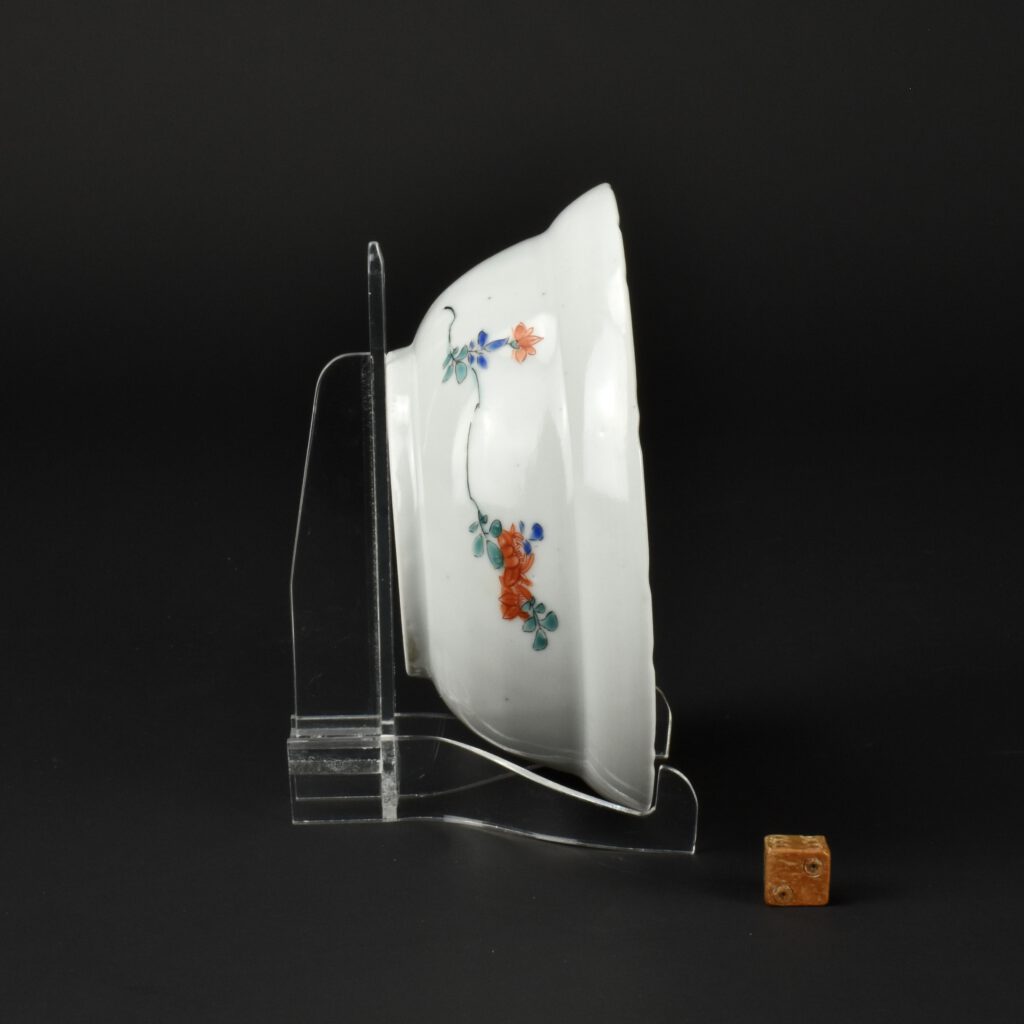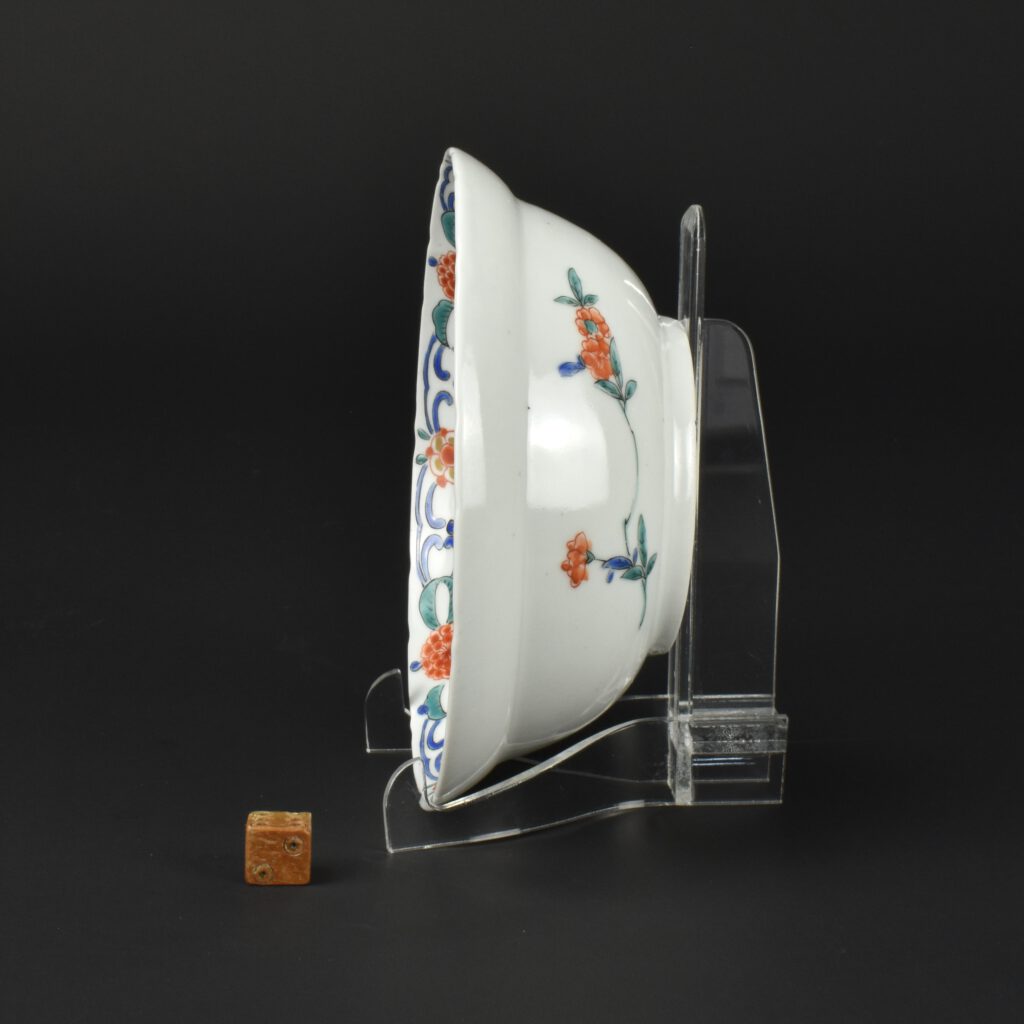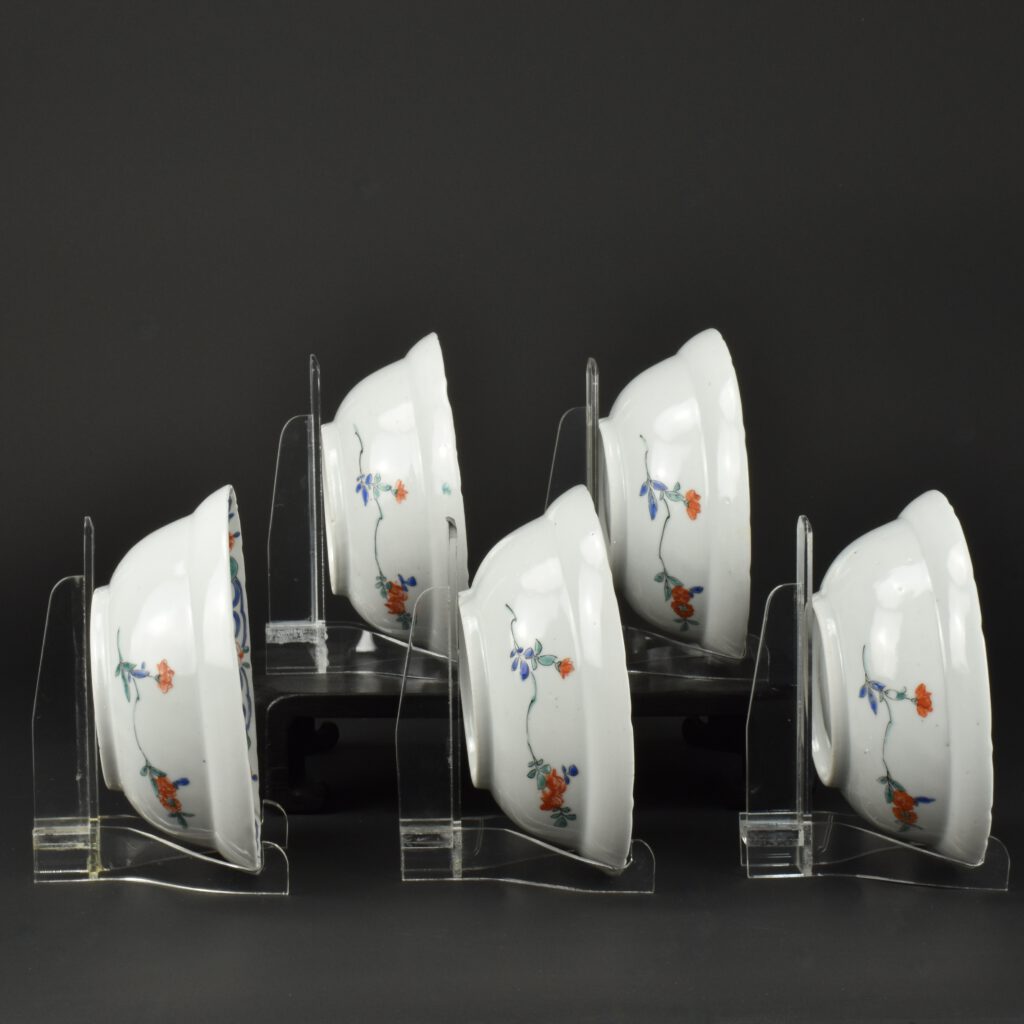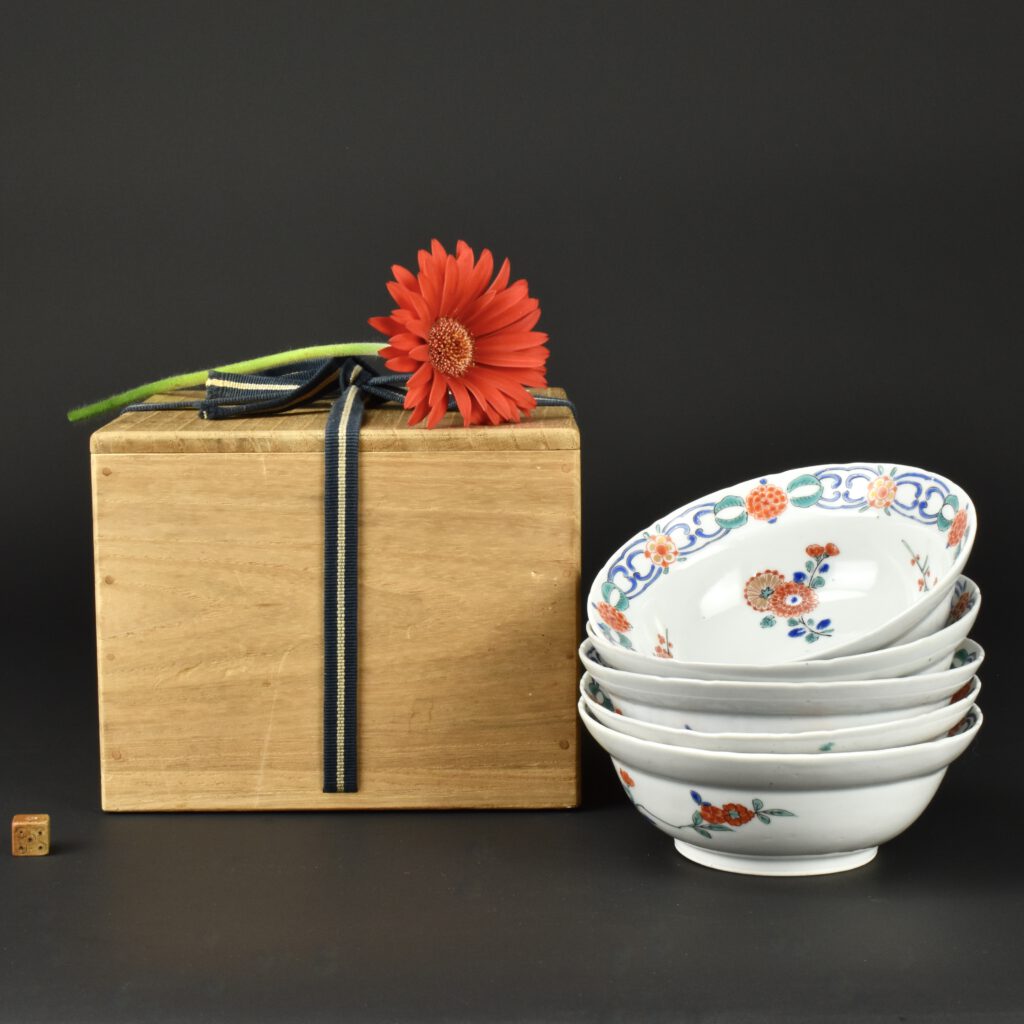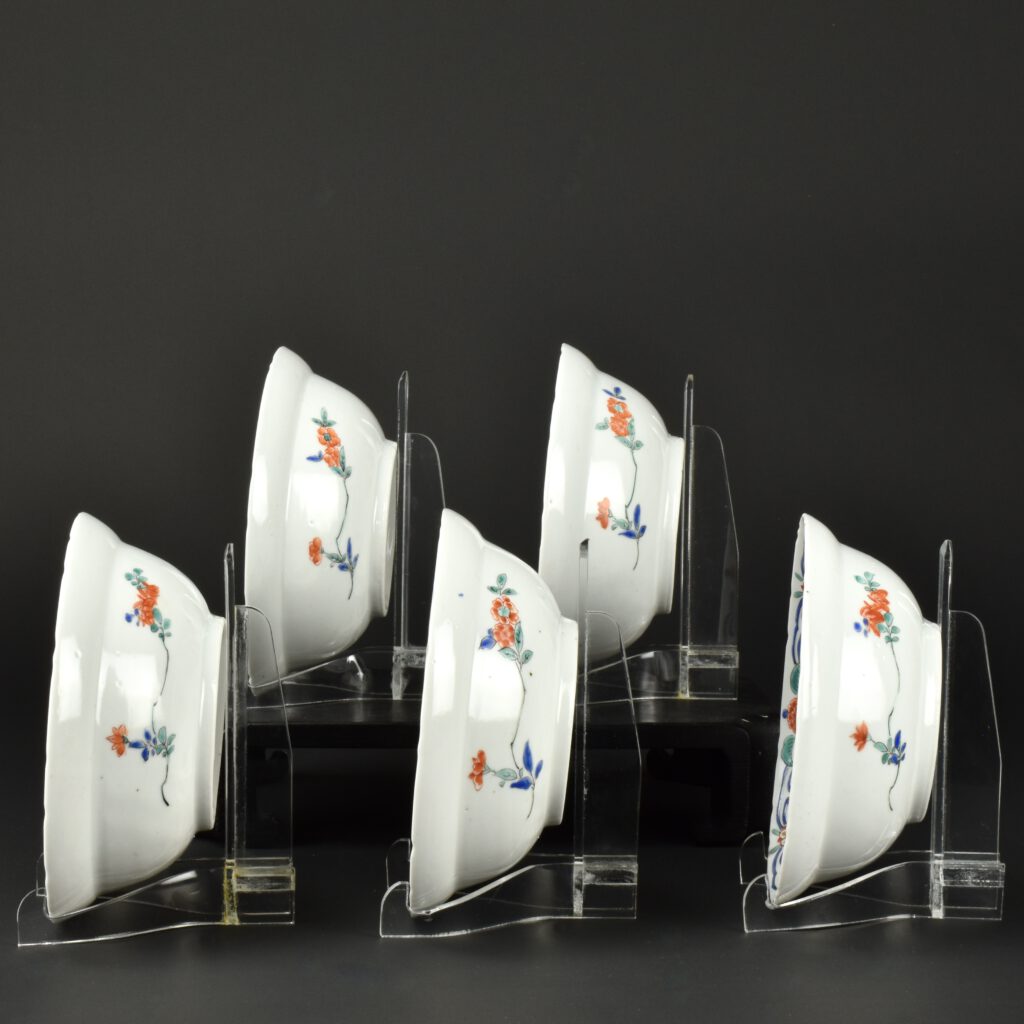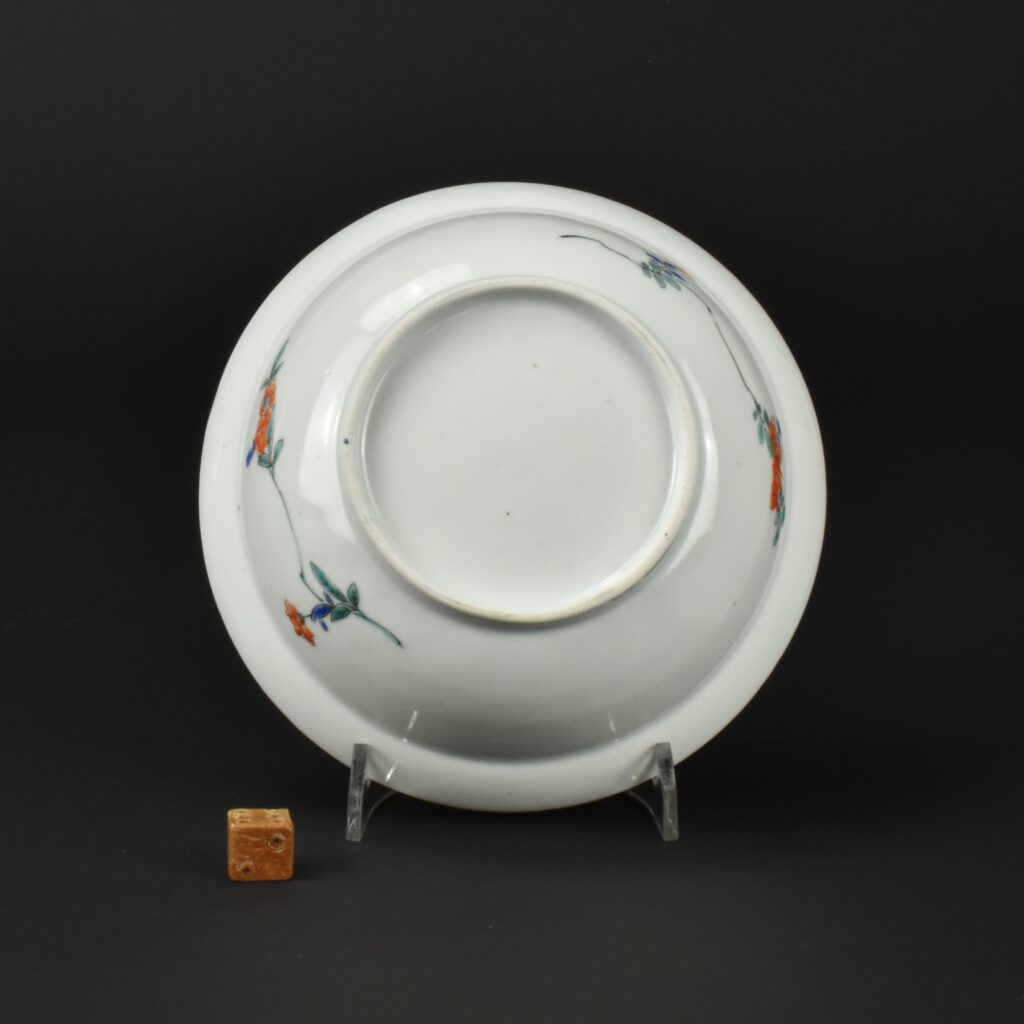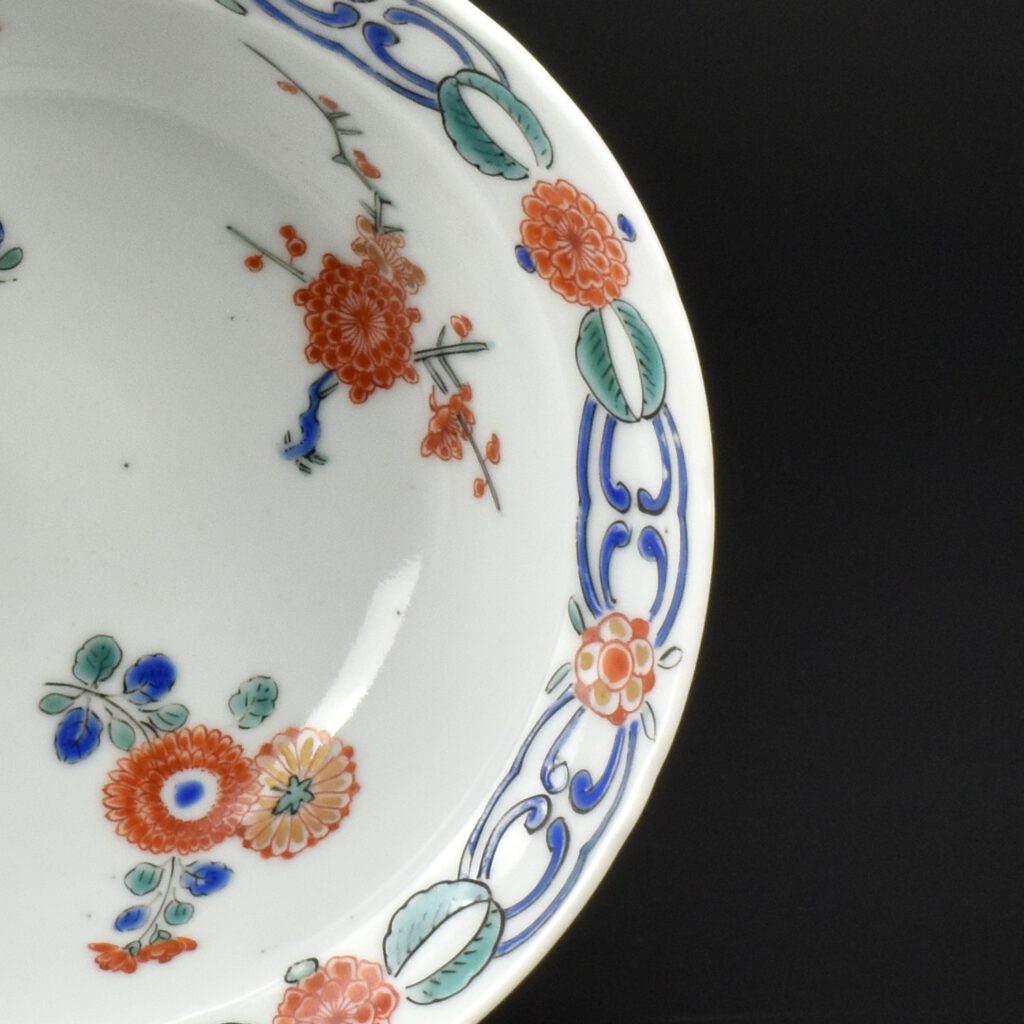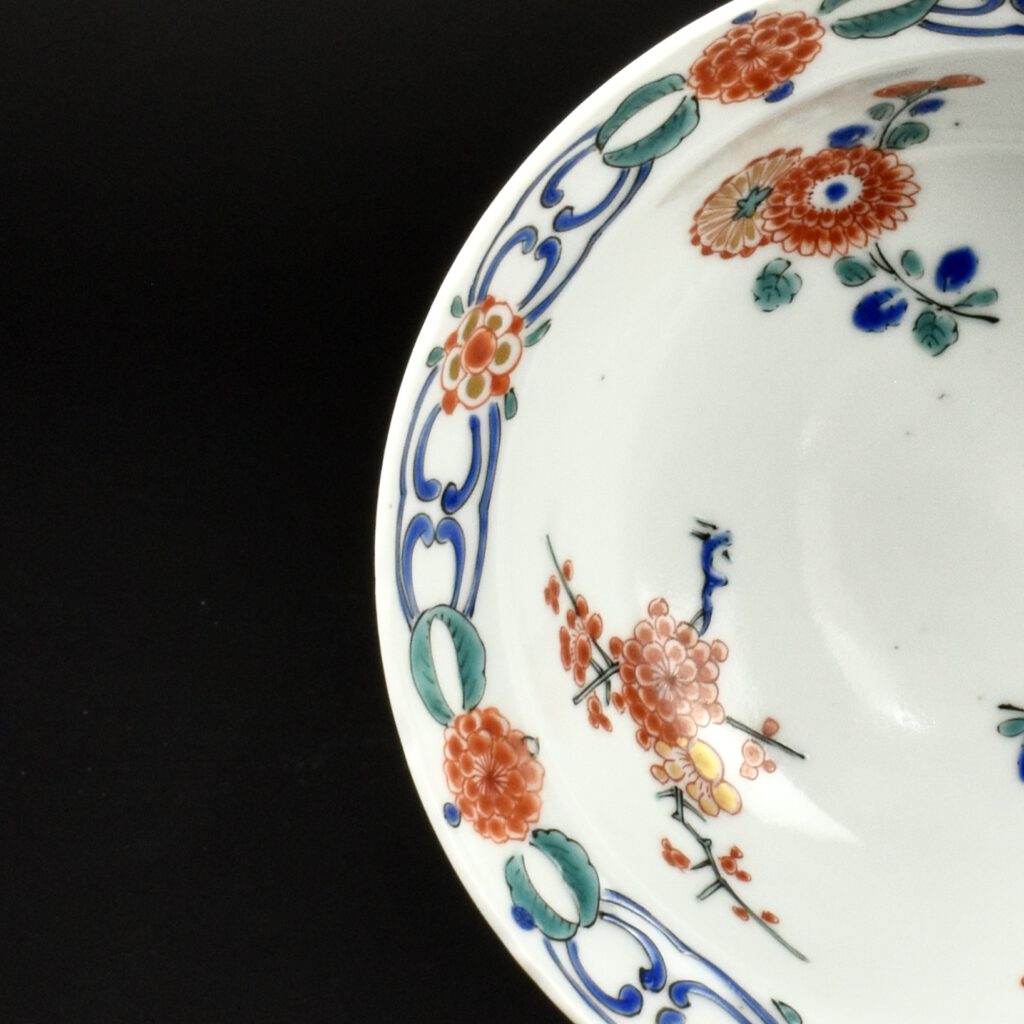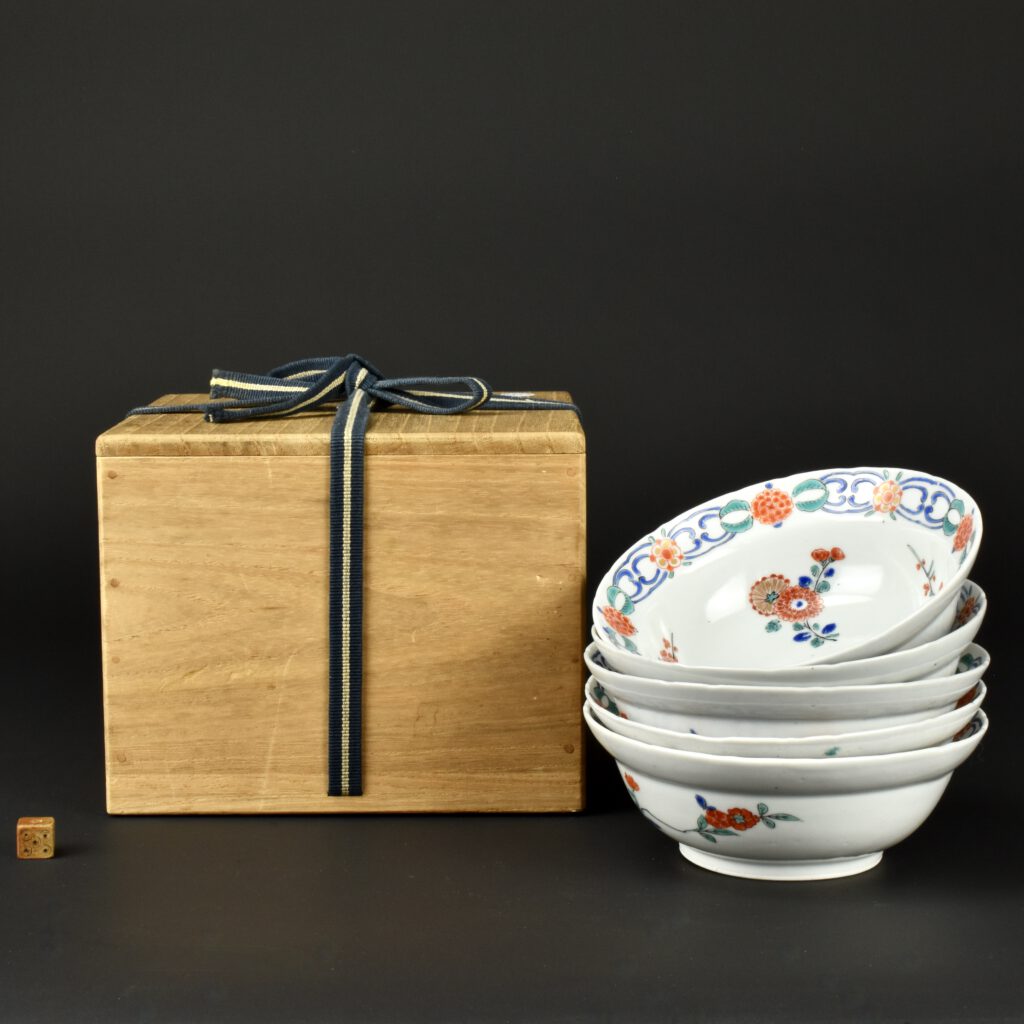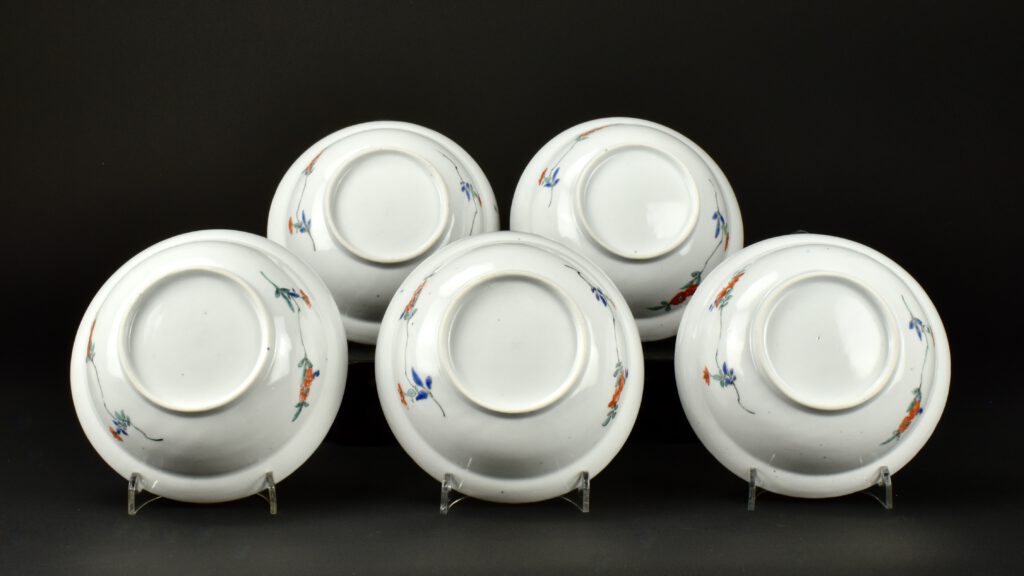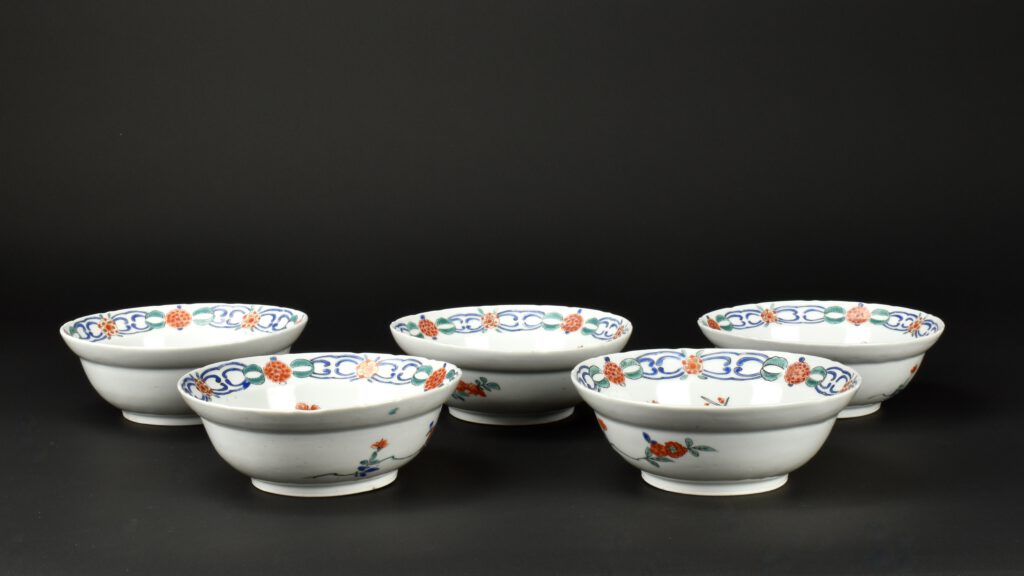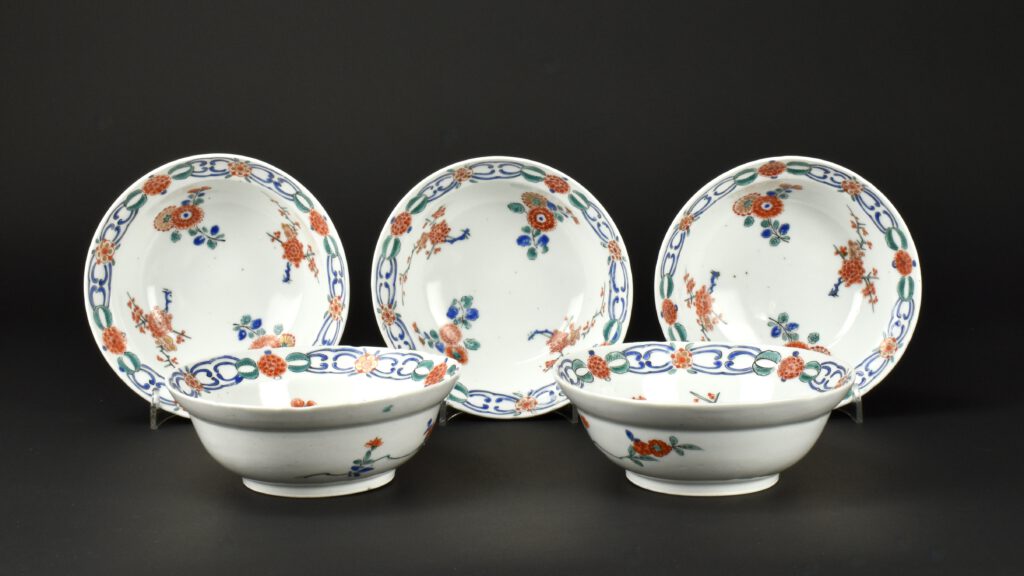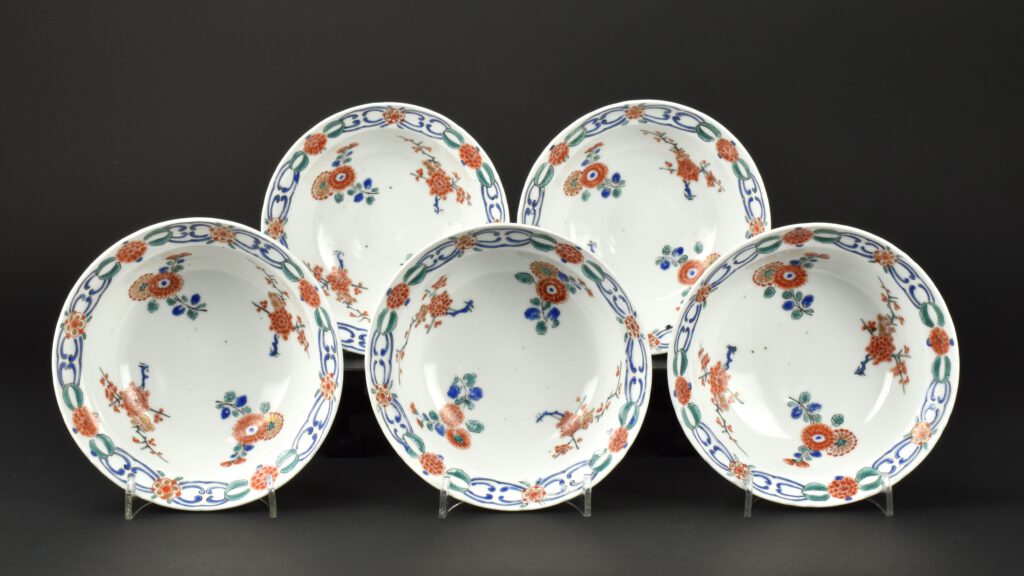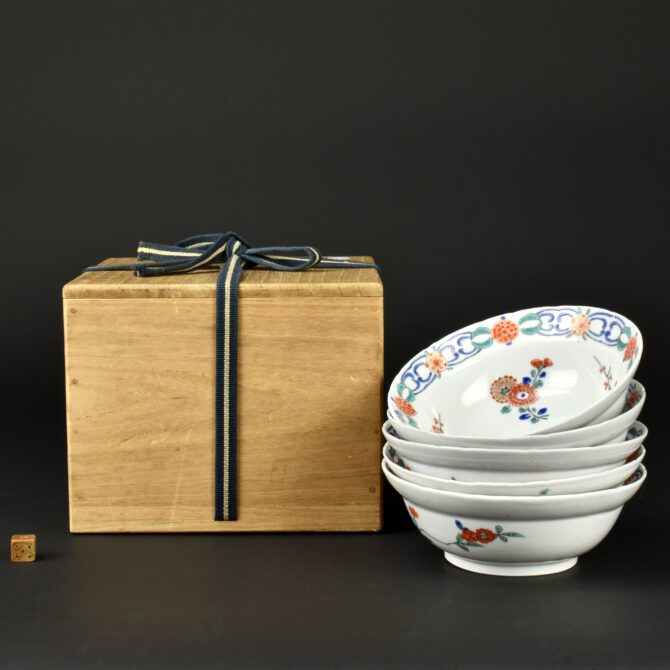
A Rare Set of Five 17th Century Japanese Kakiemon Porcelain Bowls
A Rare Set of Five 17th Century Japanese Kakiemon Porcelain Bowls, Kakiemon Kilns c.1670 – 1690. These small Kakiemon circular bowls were made with the Nigoshide (milky white) body that is typical of the period of around 1670 to 1690. The porcelain is of very high quality, and the potting is very good. I say potting but they were not thrown on the wheel, rather these bowls were made over a hump-mould. Moulded were commonly used at Kakiemon and Arita. The bowls have slightly curved everted rims, the profile shows a gentle curve down towards the base. The quality of painting is very good and the jewel like enamels sparkle in the light. The decoration consists of alternating with Chrysanthemum (the National Flower of Japan) and Prunus on the rim, linked by stylised in green and tendril like links in blue. The well is decorated by sprays of Chrysanthemum and Prunus. The five bowls come with an inscribed Tomobako. These storage boxes are an important part of Japanese culture, often made of cedar or paulownia wood. To hold the box and the lid closely together a string is used, which is knotted above the lid in a slipknot (himokake 紐掛け). It was once round, but since the beginning Edo Period (1603-1868) a flat cotton string (sanada-himo 真田紐) is more common. It took me a while to get this right, if you get it wrong it might seem safe but isn’t. Unlike many countries, traditional Japanese buildings had few if any solid walls, so shelves as we know them were not used. Precious objects were kept in boxes for a number of reasons. Western displays with objects on permanent show mean the brain starts to dismiss the objects, they just blend into their environment and become unseen. In Japan, tomobako would be opened among invited friends, they could be looked at with fresh eyes, shared and passed around. A far more down to earth reason is the extreme danger of volcanoes in Japan.
While there is much debate about what was actually made at the Kakiemon kilns, and was made at Arita, it seems clear that the Nigoshide body was exclusively used at Kakiemon. There has been allot of Japanese research undertaken at the Kakiemon kilns, and fragments of porcelain as well as moulds have been recovered from the kiln sites, unfortunately I have only found this information in Japanese books (in Japanese). Nigoshide refers to a fine milky-white porcelain body that glows with a warm tint, in Japan it is sad to be reminiscent of rice-water. While white porcelain usually sports a blue tint, Nigoshide porcelain has a soft milky-white appearance. Nigoshide was invented in the 1670s as the perfect porcelain body for complimenting the brilliant polychrome overglaze enamel colours created at Kakiemon. It is notable that the Kakiemon enamel decorated pieces with underglaze blue do not use the Nigoshide body, yet fragments of this type have been recovered from the Kakiemon kiln sits. The main period of production of Kakiemon Nigoshide ware was from about 1670 to 1690. Due to lack of the right materials and economic cutbacks, Nigoshide porcelain went out of production by the mid-18th century, however there was a notable decline in production from around 1690.
See Below For More Photographs and Information.
SOLD
- Condition
- In excellent condition, one bowl with very minor wear.
- Size
- Diameter 13.6 cm (5 1/3 inches).
- Provenance
- N/A
- Stock number
- 27108
Information
Kakiemon Porcelain
While there is much debate about what was actually made at the Kakiemon kilns, and was made at Arita, it seems clear that the Nigoshide body was exclusively used at Kakiemon. There has been allot of Japanese research undertaken at the Kakiemon kilns, and fragments of porcelain as well as moulds have been recovered from the kiln sites, unfortunately I have only found this information in Japanese books (in Japanese). Nigoshide refers to a fine milky-white porcelain body that glows with a warm tint, in Japan it is sad to be reminiscent of rice-water. While white porcelain usually sports a blue tint, Nigoshide porcelain has a soft milky-white appearance. Nigoshide was invented in the 1670s as the perfect porcelain body for complimenting the brilliant polychrome overglaze enamel colours created at Kakiemon. It is notable that the Kakiemon enamel decorated pieces with underglaze blue do not use the Nigoshide body, yet fragments of this type have been recovered from the Kakiemon kiln sits. The main period of production of Kakiemon Nigoshide ware was from about 1670 to 1690. Due to lack of the right materials and economic cutbacks, Nigoshide porcelain went out of production by the mid-18th century, however there was a notable decline in production from around 1690.
Kakiemon decoration is usually of high quality, often delicate and with well-balanced asymmetric designs. The designs were normally quite sparse emphasizing the. Kakiemon porcelain was decorated with a great variety of imaginative designs which include elements such as the `banded hedge`, `flying squirrel`, and the `Quail and Millet` design in the West. The `Three Friends of Winter` were also a very popular group of designs, other subject taken from nature include flowers (especially the chrysanthemum, the national flower of Japan) as well as birds and rock-work. Figural subjects such as the so-called `Hob in the Well` were also popular. This design illustrates a Chinese folk tale where a sage saves his friend who has fallen into a large fish-bowl by throwing stones at it, breaking open the pot. Banded-Hedges were a formal device within Japanese traditional gardens, they were often incorporated in designs, includes `The Three Friends of Winter` (Pine, Bamboo and Prunus). These three plants signify perseverance, as neither the pine nor the bamboo shed their leaves in winter and the plumb (Prunus) flowers at the very end of the winter, heralding the arrival of spring.
Kakiemon Bowls
Robert McPherson Antiques Sold Archive
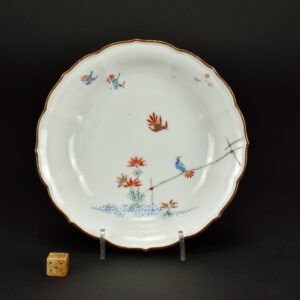
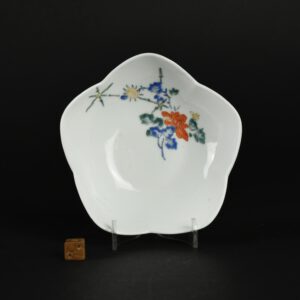
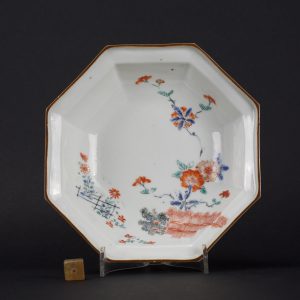
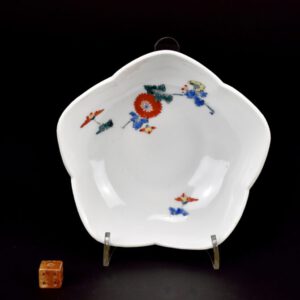
The opaque white milky Nigoshide porcelain was used on the finest pieces, it appears that it was reserved for fine quality enamelled decoration and the secret of its production was guarded well. Kakiemon porcelain was decorated with a great variety of imaginative designs which include elements such many of which are well known in the West. Elements of these designs acquired European names early on. For example `banded hedge`, these are actually a brushwood fences, `flying squirrel`, these are tree shrews and the`Quail and Millet` design. The `Three Friends of Winter` were also a very popular group of designs, other subject taken from nature include flowers (especially the chrysanthemum, the national flower of Japan) as well as birds and rock-work. Figural subjects such as the `Hob in the Well` were also popular. This design illustrates a Chinese folk tale where a sage saves his friend who has fallen into a large fish-bowl by throwing stones at it, breaking open the pot. Banded-Hedges were a formal device within Japanese traditional gardens, they were often incorporated in designs, includes `The Three Friends of Winter` (Pine, Bamboo and Prunus). These three plants signify perseverance, as neither the pine nor the bamboo shed their leaves in winter and the plumb (Prunus) flowers at the very end of the winter, heralding the arrival of spring.
See below for more photographs and references.
SOLD
Condition
In perfect condition, some minute firing spects to the glaze.
Size
Diameter 12.6 cm (4 3/4 inches)
Provenance
An English private collection formed in the 1960s.
Stock number
26109
References
The Burghley Porcelains, An Exhibition from The Burghley House Collection and Based on the 1688 Inventory and 1690 Devonshire Schedule (Japan Society, New York, 1986. ISBN 0-913304-23-9). Page 249, item 104.
